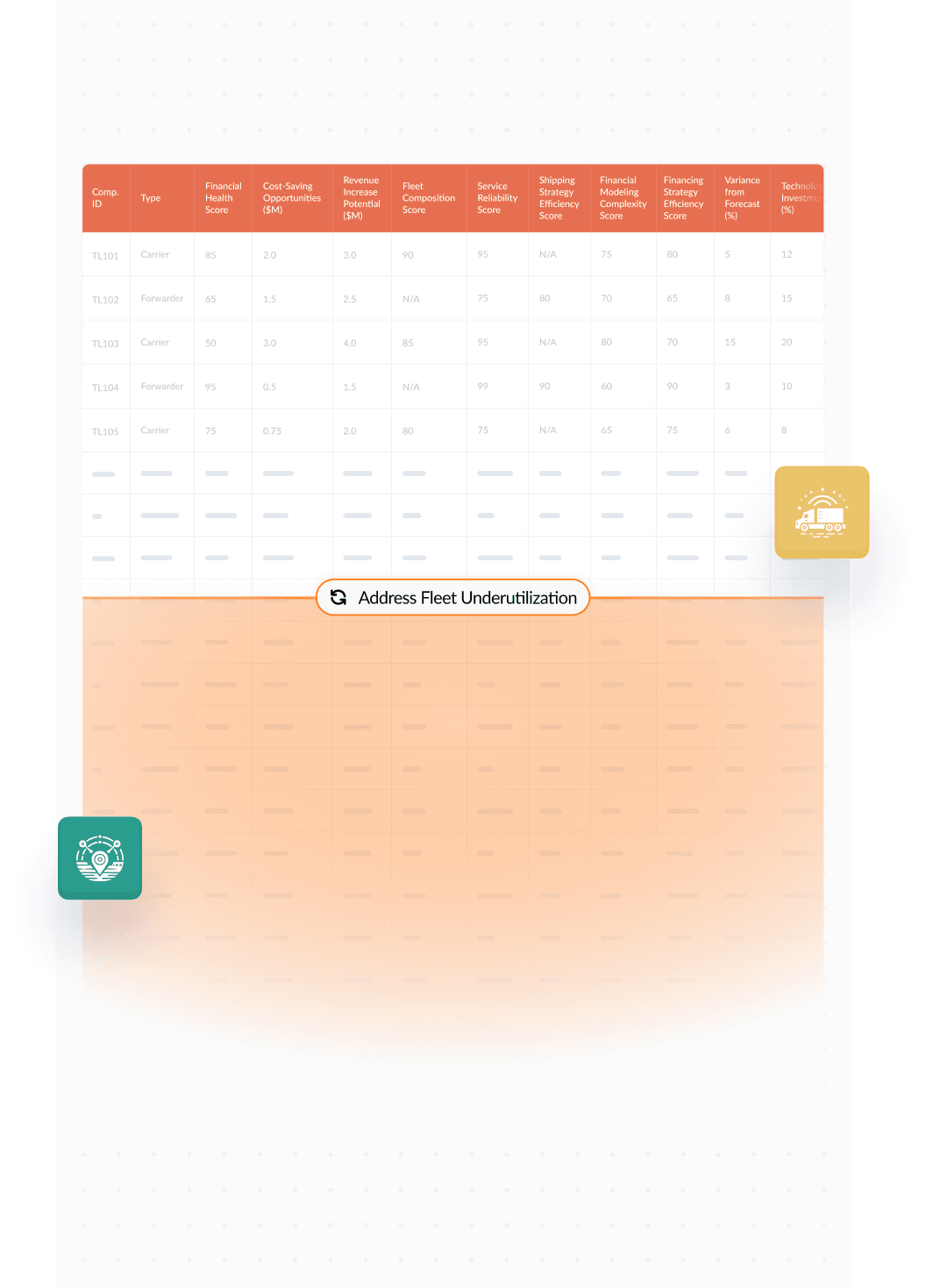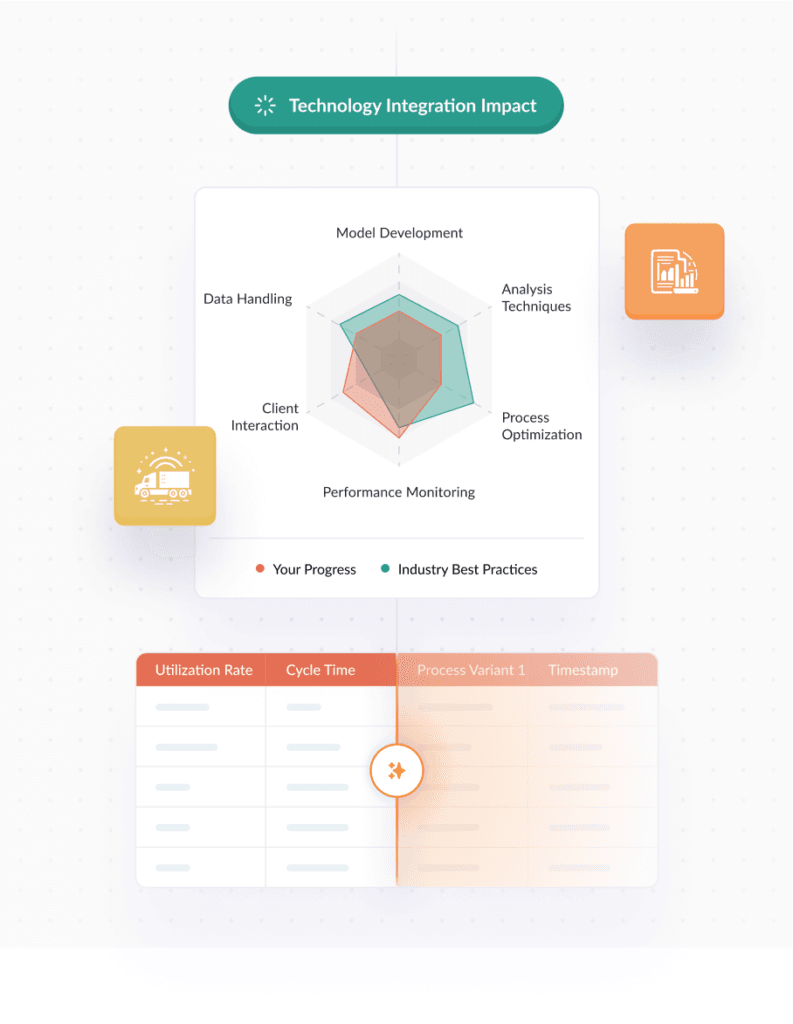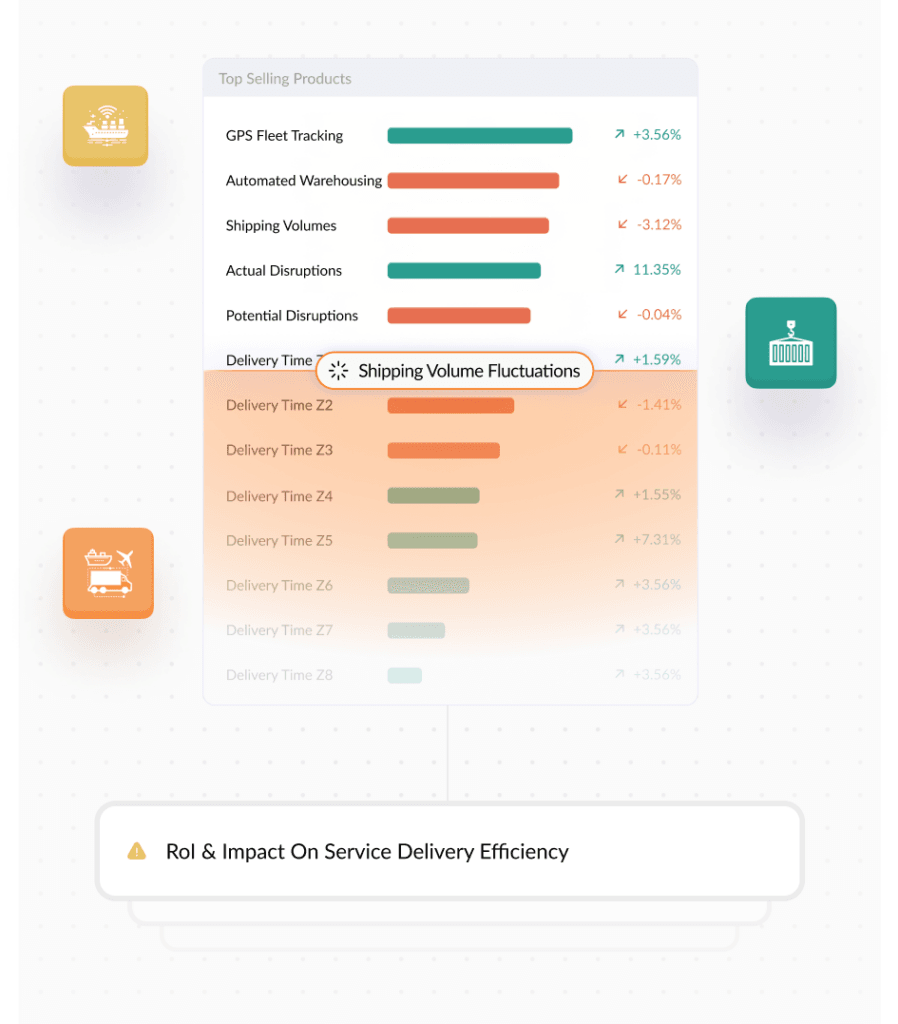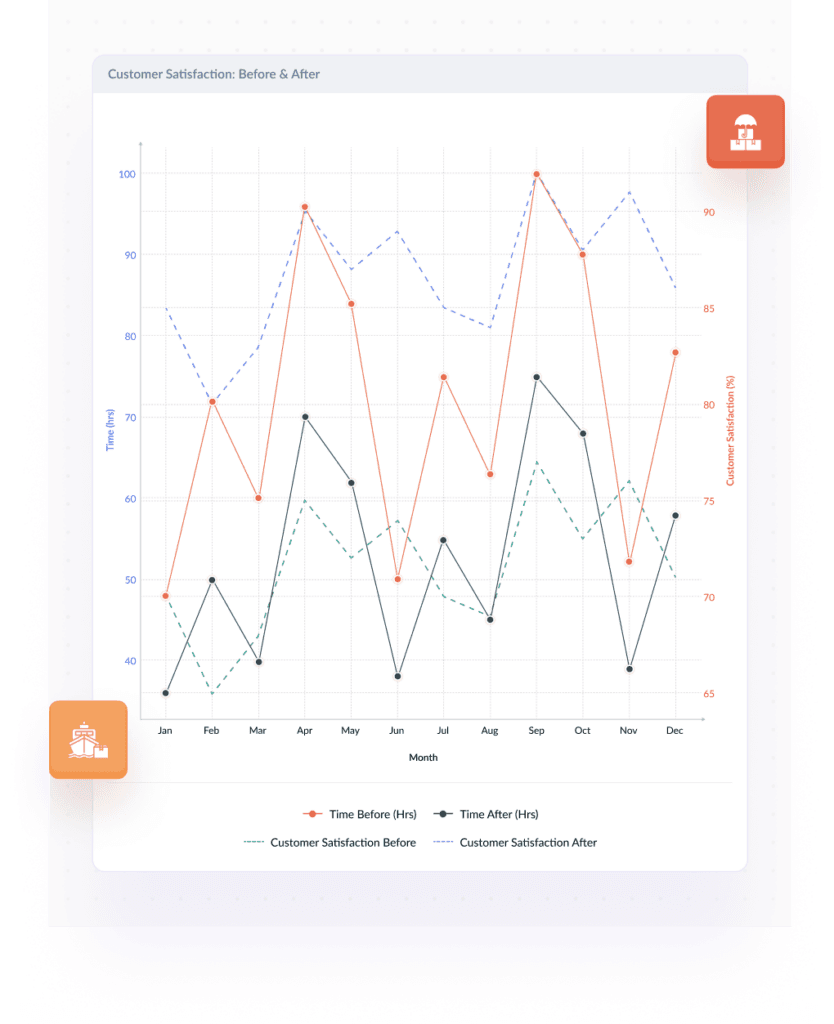Transportation and Logistics
Movement of Goods

Financial & Capital Analytics
Carriers: Conduct independent audits of financial health and identify cost-saving opportunities and revenue enhancement strategies
Forwarders: Evaluate the financial impact of different shipping strategies, such as consolidation vs. direct shipping, on overall margins
Carriers: Evaluate and optimize fleet composition to ensure the right mix of vehicles based on usage patterns and cost efficiency
Forwarders: Balance the portfolio of logistics partners to reduce dependency on any single carrier and enhance service reliability
Carriers: Provide insights on competitor strategies and customer preferences to help tailor service offerings and improve market positioning
Forwarders: Assess the impact of delivery speed and reliability on customer satisfaction and retention rates
Carriers: Develop financial models for complex scenarios such as mergers, acquisitions, and large capital investments that require specialized expertise
Forwarders: Create models to forecast cash flows based on varying shipping volumes and service levels
Carriers: Advise on capital raising strategies and alternative financing options for fleet expansion or technological upgrades
Forwarders: Structure financing to support service expansion while maintaining liquidity for operational needs
Carriers: Conduct detailed variance analysis to identify discrepancies between forecasted and actual financial performance and recommend corrective actions
Forwarders: Identify variances in shipping volumes and adjust service offerings and pricing strategies
Carriers:
– Optimize capital structure by balancing lease obligations with debt and equity for growth
– Assess risks related to supplier reliability and logistical challenges, and develop mitigation strategies to ensure continuity of operations
– Assess risks related to fleet downtime and unexpected maintenance needs, and develop mitigation strategies
Forwarders:
– Evaluate supply chain risks including carrier reliability and logistical challenges, and develop contingency plans for disruptions
– Structure financing to support service expansion while maintaining liquidity for operational needs
Carriers: Implement best practices for fleet maintenance and scheduling to minimize downtime and reduce operational costs
Forwarders: Optimize warehouse operations and inventory management to improve turnaround times and reduce storage costs
Carriers: Evaluate the financial implications and ROI of adopting new technologies such as advanced telematics or electric trucks
Forwarders: Assess the cost-benefit of implementing new logistics technologies like warehouse automation and advanced tracking systems
Carriers: Provide independent audits of financial statements to ensure accuracy and transparency, and conduct compliance reviews to adhere to industry standards
Forwarders: Conduct compliance reviews and independent audits to ensure adherence to industry regulations and financial transparency
Process Mining
Gather event logs from various IT systems, databases, and applications to record all relevant events within the process, including timestamps, user or system actions, and outcomes
Cleanse and prepare the collected data for analysis by filtering out irrelevant information, correcting errors, and standardizing the format to create a consistent dataset that accurately reflects the business processes
Construct a process model using algorithms to visualize the sequence of activities in the process, thereby understanding the actual workflows and identifying the most common paths and deviations
Compare the discovered process model to an existing model or predefined rules to check for conformance and identify compliance issues, bottlenecks, and inefficiencies
Enhance the process model based on insights gained from conformance checking to optimize processes, automate tasks, and implement control measures for better efficiency


Business Intelligence
Review historical data on shipping volumes, delivery times, and route efficiency to understand operational performance
Examine causes of delays or increased costs by analyzing route data, fuel prices, and vehicle maintenance records
Forecast potential disruptions in supply chains or predicting future demand for shipping services using historical data and external factors like economic indicators
Choose optimal routes and logistic strategies to improve time and cost efficiencies based on predictive model outcomes
Draw conclusions from combined data on logistics, customer feedback, and global trade patterns to enhance strategic decisions and adapt to market changes
Streamlining
Examine the entire logistics chain, from order receipt to delivery, including intermediary warehousing and sorting processes. Identify inefficiencies like underutilized routes, unnecessary storage steps, or redundant transport modes
Implement technologies such as GPS fleet tracking, automated warehousing solutions, and electronic logging devices (ELDs) to optimize route planning and reduce manual data entry
Monitor metrics like delivery times, vehicle load capacity utilization, fuel efficiency, and customer satisfaction rates to pinpoint areas for improvement and measure success
Merge logistical functions across different regions where possible, centralize inventory management, and optimize distribution centers to minimize costs and improve service delivery
Establish mechanisms for drivers, customers, and logistic partners to provide real-time feedback on service delivery, which can help quickly resolve issues and adapt to changing needs
Review the efficiency and effectiveness of the streamlined logistics and transportation systems to determine if cost savings, service speed, and customer satisfaction goals are being met. Adjust strategies accordingly

